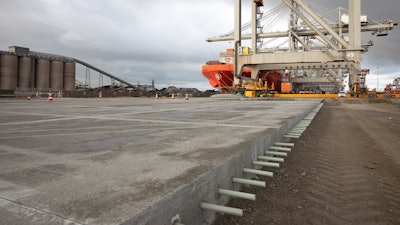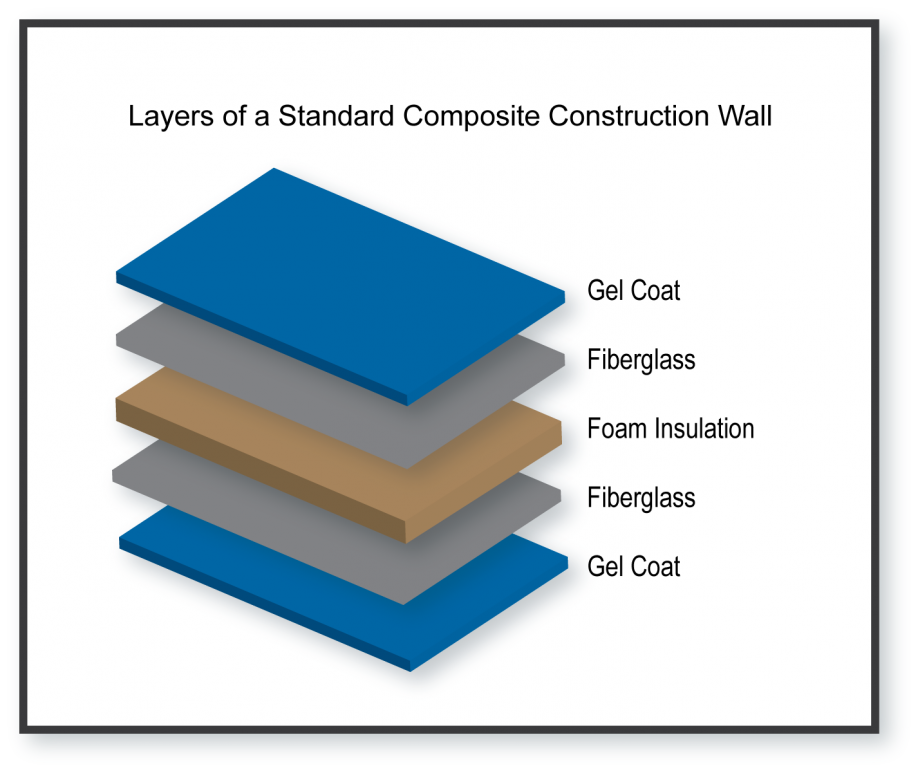High-Performance Composites for Eco-Friendly Building
Wiki Article
Unlocking the Environmental Advantages of Recycled Compounds in Construction and Design
In the realm of building and style, the use of recycled compounds holds substantial assurance for boosting sustainability techniques and lowering ecological impact. The shift towards an extra lasting future in these sectors pivots on opening the complete capacity of recycled composites.
Ecological Influence Decrease
The reduction of environmental impact via the usage of recycled compounds in building and construction and design plays an important duty in sustainable techniques. By including recycled composites into structure materials, the building and construction sector can substantially reduce its carbon footprint and add to a much more environmentally friendly future. These lasting products, made from repurposed plastics, wood fibers, or various other recycled aspects, offer a sensible option to conventional building and construction materials without compromising on top quality or toughness.
Recycled compounds assist draw away waste from garbage dumps and reduce the requirement for extracting raw products, thus preserving natural deposits. Additionally, the production process of these compounds typically consumes much less power and releases fewer greenhouse gases contrasted to producing virgin products (composites). This change in the direction of using recycled compounds not just decreases environmental damage yet also promotes a round economy by motivating the reuse of products that would otherwise be thrown out
Waste Reduction
With a concentrate on lessening waste in building and construction and layout, the integration of recycled compounds offers a lasting service to minimize ecological impact. Waste minimization is an essential aspect of lasting practices, and using recycled compounds presents a chance to accomplish this objective effectively. By utilizing materials that have currently offered their first purpose, such as recycled plastics or reclaimed wood fibers, the building and style sectors can significantly reduce the amount of waste produced and sent to garbage dumps.Recycled composites have the prospective to draw away considerable quantities of waste from standard disposal approaches, adding to an extra round economic situation where resources are utilized efficiently. Additionally, the manufacturing process of recycled composites typically takes in much less power and generates less discharges compared to virgin products, additionally decreasing the ecological footprint of construction and design tasks.
Implementing waste reduction approaches via the consolidation of recycled composites not just aids in saving natural resources yet additionally advertises a much more sustainable strategy to structure and creating for a greener future.
Energy Conservation
Including recycled compounds not only minimizes waste in building and design but additionally plays a critical function in enhancing power preservation methods within the sector. Making use of recycled composites in building can considerably add to power conservation with various methods. The manufacturing of virgin products normally requires significant energy inputs, whereas utilizing recycled compounds takes in much less power, thereby minimizing overall power intake. Furthermore, including recycled composites can add to far better insulation properties in buildings, lowering the need for extreme home click to investigate heating or cooling, and as a result decreasing power usage for environment control. The light-weight nature of many recycled composites can lead to lighter frameworks, calling for less energy for transportation and setup. By advertising using recycled composites in building and layout, the sector can make significant strides towards attaining power efficiency and decreasing its carbon impact, inevitably adding to a more sustainable built atmosphere.Carbon Impact Reduction
Enhancing sustainability methods through the use of recycled composites in building and construction and layout substantially minimizes the carbon impact of the industry. By integrating recycled materials into the manufacturing of composites, the requirement for virgin sources reduces, bring about reduced power usage and greenhouse gas discharges connected with typical manufacturing processes. This decrease in carbon footprint is crucial in combating environment modification and advertising a more environmentally pleasant technique to construction and design.Furthermore, using recycled composites additionally assists in diverting waste from land fills, consequently reducing the ecological impact of disposal and advertising a circular economic situation. The carbon footprint decrease achieved via the adoption of recycled compounds aligns with the worldwide press towards lasting practices and the decrease of commercial discharges. It showcases a dedication to responsible source monitoring and a shift in the direction of greener alternatives in the building and layout industries. Inevitably, by focusing on the combination of recycled compounds, the market can make substantial strides in lowering its carbon footprint and adding to a more sustainable future.
Sustainable Future
The assimilation of recycled compounds in construction and layout not only addresses prompt environmental worries but likewise lays a strong foundation for a lasting future in the market. By incorporating recycled compounds into structure products and items, the construction and layout sectors can dramatically minimize their dependence on virgin sources, causing an extra circular economic situation. This change towards sustainability is crucial for alleviating the environmental effect of typical building practices, which often lead to high degrees of waste generation and resource exhaustion.

Final Thought
In conclusion, recycled compounds supply considerable environmental advantages in construction and style by reducing environmental effect, lessening waste, saving energy, decreasing carbon impact, and advertising a lasting future. Accepting the use of Website recycled composites can add to an extra environmentally-friendly technique to building and design, ultimately leading to an extra lasting and greener future for all.The reduction of environmental influence with the usage of recycled compounds in building and style plays an important function in sustainable techniques.With a focus on minimizing waste in construction and design, the assimilation of click recycled compounds uses a sustainable remedy to minimize environmental influence. By promoting the use of recycled compounds in construction and layout, the market can make substantial strides in the direction of achieving power efficiency and reducing its carbon impact, ultimately contributing to an extra sustainable built setting.

Report this wiki page